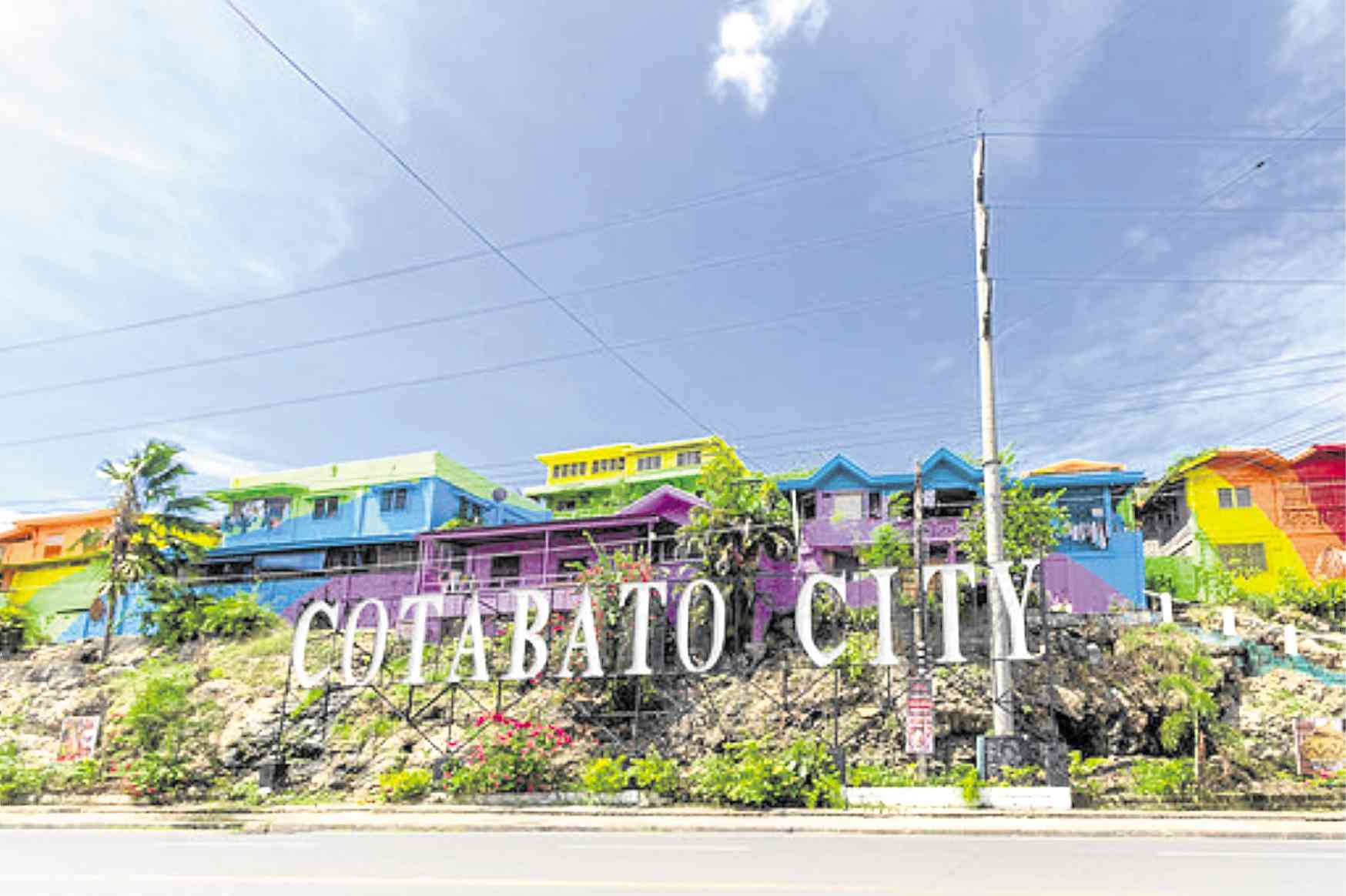
Welcoming visitors in Cotabato City approaching Pedro Colina (PC) Hill is a cluster of kaleidoscope-colored houses, with design elements of its cultural symbols, ginaukit (a fleet of Muslim boats), gongs and crabs.
Cotabato City is recognized as the most competitive city in Region 12 (which includes South Cotabato, North Cotabato, Sultan Kudarat, Sarangani and General Santos City). It’s also highly regarded in government efficiency. Police claim it’s the safest place in the region.
PC Hill is one’s introduction to the city’s history. Its elevation made it a convenient fort. Natives used it as vantage point to watch out for intruders. It became known as Kutang Bato, thus, the name Cotabato.
Cotabato City is the center of the Autonomous Region in Muslim Mindanao (ARMM). It is not to be confused with its namesake province. Cotabato City is actually located in Maguindanao, although it’s independent of that province.
Well known for seafood such as mud crabs, milkfish and prawns, Cotabato City is likewise becoming known for halal food manufacturing. Halal is meat that conforms to Islamic laws.
Its new P20 million-worth slaughterhouse is the first of its kind in the Philippines. What used to be the old slaughterhouse is now a first-rate halal facility for hogs.
Aside from the continued operations of homegrown malls Al Noor and South Seas Complex (the city’s largest and oldest shopping center), Cotabato City’s retail business is thriving with the entry of City Mall, Robinsons Department Store and Supermarket, and Puregold.
Historical landmarks
As a tourist destination, Cotabato City is known for a number of historical landmarks.
The Grand Mosque, in Barangay Kalanganan near Tamantaka River, was built by Sultan of Brunei Haji Hassanal Bolkiah. It is the Philippines’ largest mosque. Muslims appreciate the peaceful vibes of its cavernous halls.
The 78-year-old Cotabato City Hall Museum was designed by National Artist for Architecture Juan Arellano. He combined elements from Maguindanao architecture and modern construction.
The Tamontaka Church was built in the late 19th century and became the center of Jesuit evangelization. In the 14th century, a Malaccan prince, Shariff Muhammad Kabunsuan, sailed to Mindanao, arrived on the banks of the Rio Grande, and taught Islam. He founded the Sultanate of Maguindanao.
An earthquake and fire destroyed parts of Tamontaka Church. Thankfully, workers have maintained its original façade and a tunnel that connects to a catacomb.
The tunnel, which is part of a labyrinth of caves, leads to PC Hill. Locals who didn’t convert to Christianity found refuge in the caves, including the Kutawato or Kutang Bato Cave in the middle of the city.
Pakarajaan
The Pakarajaan (merrymaking) festival here runs from April to December.
Every mid-December, the Shariff Kabunsuan Festival celebrates its cultural diversity through music, dance, games, a fluvial parade, trade fairs and thanksgiving rites.
A stroll on Bai Walk along the banks of Tamontaka River offers a refreshing view of the sea and mangroves.
Cotabato City’s culinary scene is alive despite the influx of fast-food franchises. Pastil, a household staple, is rice with chicken or beef adobo strips, wrapped in banana leaves.
Kalintubo is rice with marinated chicken cutlets or chicken liver, and wrapped in a cone-shaped banana leaf with the meat peeping out.
Sinina is beef or goat meat stew, made with coconut milk and complemented with palapa, a condiment of white scallions, chili and ginger.
A meal is capped with dodol, a sticky dessert of coconut milk, sugarcane crystals and rice flour cooked for nine hours.
Tinagtag is rice fritter, finely ground rice, sugar and water. The batter is placed on a coconut shell strainer which shapes the rice noodles.
There are grill joints near Rizal Park, which is also on Sinsuat Avenue.
Babo Katips in Tamontaka is famous for its fried catfish. Hala Bira Halal on Jose Lim Street is known for papaitan and bulalo. Meanwhile, Café Le Sorelle and Jamaica Le Café offer continental dishes.
Where to stay
Al Noor Hotel and Convention Center is the best place to stay for its location on Sinsuat Avenue.
For the budget-conscious, EM Manor Hotel and Convention Center is a good alternative.
Getting there
Philippine Airlines and Cebu Pacific fly to Cotabato City from Manila, Cebu and Zamboanga City (Cebu Pacific).
Within Mindanao, there’s a network of buses and vans that connects to Zamboanga City, Cagayan de Oro City, General Santos City and Davao City. —CONTRIBUTED